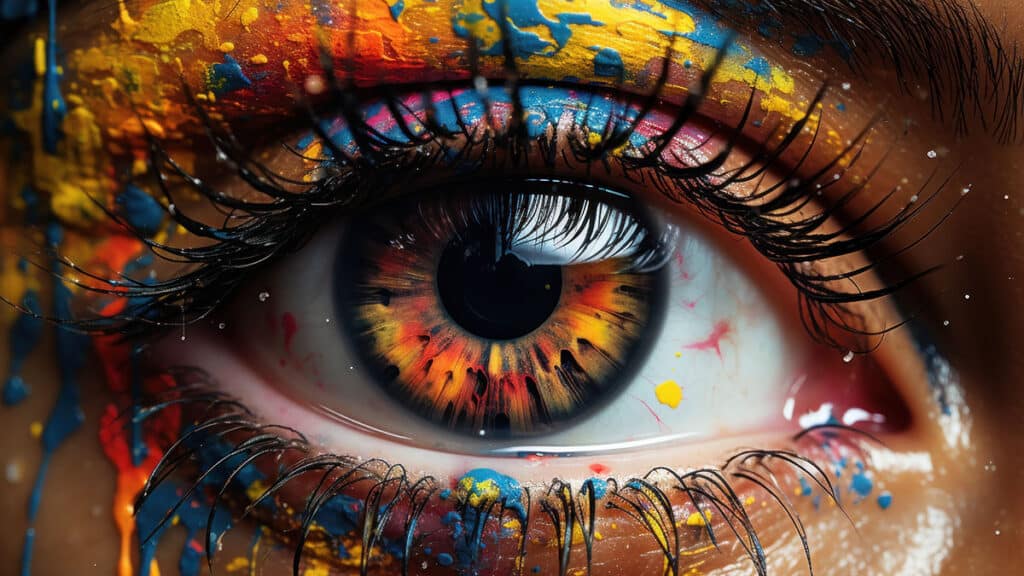The Whitney Biennial 2024 is one of the most important surveys of contemporary American art.
Whitney Biennial 2024

Whitney Biennial 2024: Even Better Than the Real Thing, one of the most important surveys of contemporary American art, opens with 69 artists and two collectives; at the Whitney Museum of American Art in Manhattan’s Meatpacking District; on March 20 – August 11, 2024. whitney.org 🇺🇸 🇧🇷 🇨🇦 🇨🇱 🇩🇴 🇸🇻 🇮🇳 🇯🇲 🇲🇽 🇳🇬 🇵🇪 🇹🇹
This is a really fun and thought-provoking exhibition. The New York art world and many famous internationals will be at the show.
Latin Artists
The Whitney Biennial is a career-making exhibition:
- Siku Allooloo, Indigenous from Yellowknife, Northwest Territories, Canada. 🇨🇦
- Eddie Rodolfo Aparicio is an El Salvadoran American from Los Angeles, California. 🇸🇻
- Seba Calfuqueo is originally from Santiago, Chile. 🇨🇱
- Debit is a New York artist, originally from Monterrey, Mexico. 🇲🇽
- Demian DinéYazhi’, Indigenous Diné Bikéyah (Navajo), originally from New Mexico. 🇺🇸
- Gbenga Komolafe and Tee Park. Komolafe is Nigerian. Park is Los Angeles, Korean. 🇳🇬 🇰🇷
- Ligia Lewis is a Berlin artist originally from Santo Domingo, Dominican Republic. 🇩🇴
- Karyn Olivier is a Philadelphia artist, originally from Port of Spain, Trinidad and Tobago. 🇹🇹
- Eamon Ore-Giron is Peruvian Irish from Tuscon, Arizona. He lives in Los Angeles. 🇵🇪 🇮🇪
- Sidney Frances Pascal (Sydney Frances Pickering) is a member of the Indigenous Lil’wat nation who lives in Vancouver, Canada. 🇨🇦
- Mavis Pusey (1928-2019) was originally from Retreat, Jamaica. 🇯🇲
- Raqs Media Collective; Jeebesh Bachi, Monica Narula, Shuddhabrata Sengupta; was founded in Delhi, India. 🇮🇳
- Clarissa Tossin is a Los Angeles artist, originally from Porto Alegre, Brazil. 🇧🇷
The Curators
This is really a curator’s exhibition. To use AI language, these are the curators who “trained” this show. They decided that the included artists are important, and representative of what is happening in art now.
The Curators:
- Chrissie Iles, Anne and Joel Ehrenkranz Curator
- Meg Onli, Curator at Large
- With Min Sun Jeon
- With Beatriz Cifuentes
Performance Curators:
- Lead curators Iles and Onli (see the Curators)
- Guest curator Taja Cheek
Film Curators:
- Lead curators Iles and Onli (see the Curators)
- Guest curator Korakrit Arunanondchai
- Guest curator asinnajaq
- Guest curator Greg de Cuir Jr
- Guest curator Zackary Drucker
Two Ways That the Whitney Biennial is Even Better Than the Real Thing
The Biennial’s title is a sly reference to the rise of art created by Artificial Intelligence. AI images look even better than the real thing because AI knows the mathematical probability of what people like, based on what it has been trained on. Unfortunately AI systems have mostly been trained on the Internet, so they have learned a lot of nonsense.
We have already reached the point where you can’t believe what you see any more. AI videos are especially frightening because we have been taught to believe what we see. People have grown used to still images being manipulated since Photoshop arrived on the scene in 1987, but manipulated videos are new. We still believe what we see on video.
We photo edit images from photo wire services every day and avoid AI images because they look too good, are not real, and may have strange artifacts called hallucinations. Even the hallucinations are better than the real thing. The cover image we used for this story is an AI eye.
There is another way to spin this thought, that also relates to the biennial. Many national narratives used to build a cohesive society are in fact false narratives that are even better than the real thing ~ for people on one side of the narrative. For example, a lot of Colonial Art paints the European Diaspora as gods and everyone else as willing servants and slaves. History didn’t actually happen that way, and if you study history with an open mind, a lot of it is really sickening. The national narratives are even better than the real thing, if you are on the winning side.
The public lynching of George Floyd by the police in 2020 shattered our American self-image. It made people see that the real thing can be far worse than our “good-guy” national narrative. The art industrial complex responded by giving more opportunities to artists of color. Artists of color responded by digging into their roots with vigor, and we are seeing what they have found in art today. You will see it all at the Whitney Biennial.
